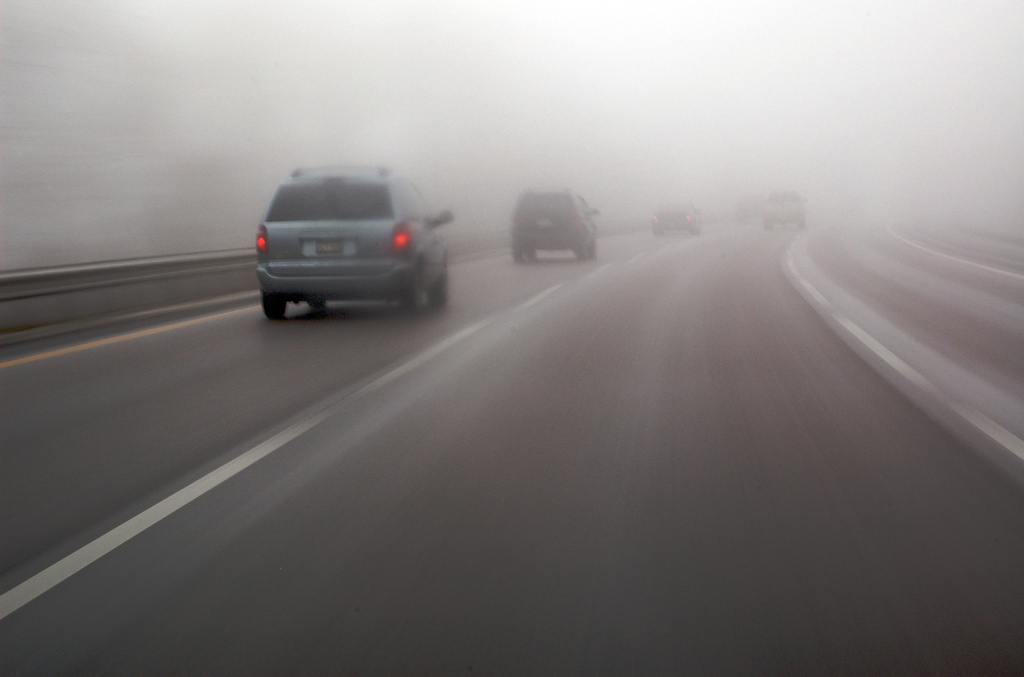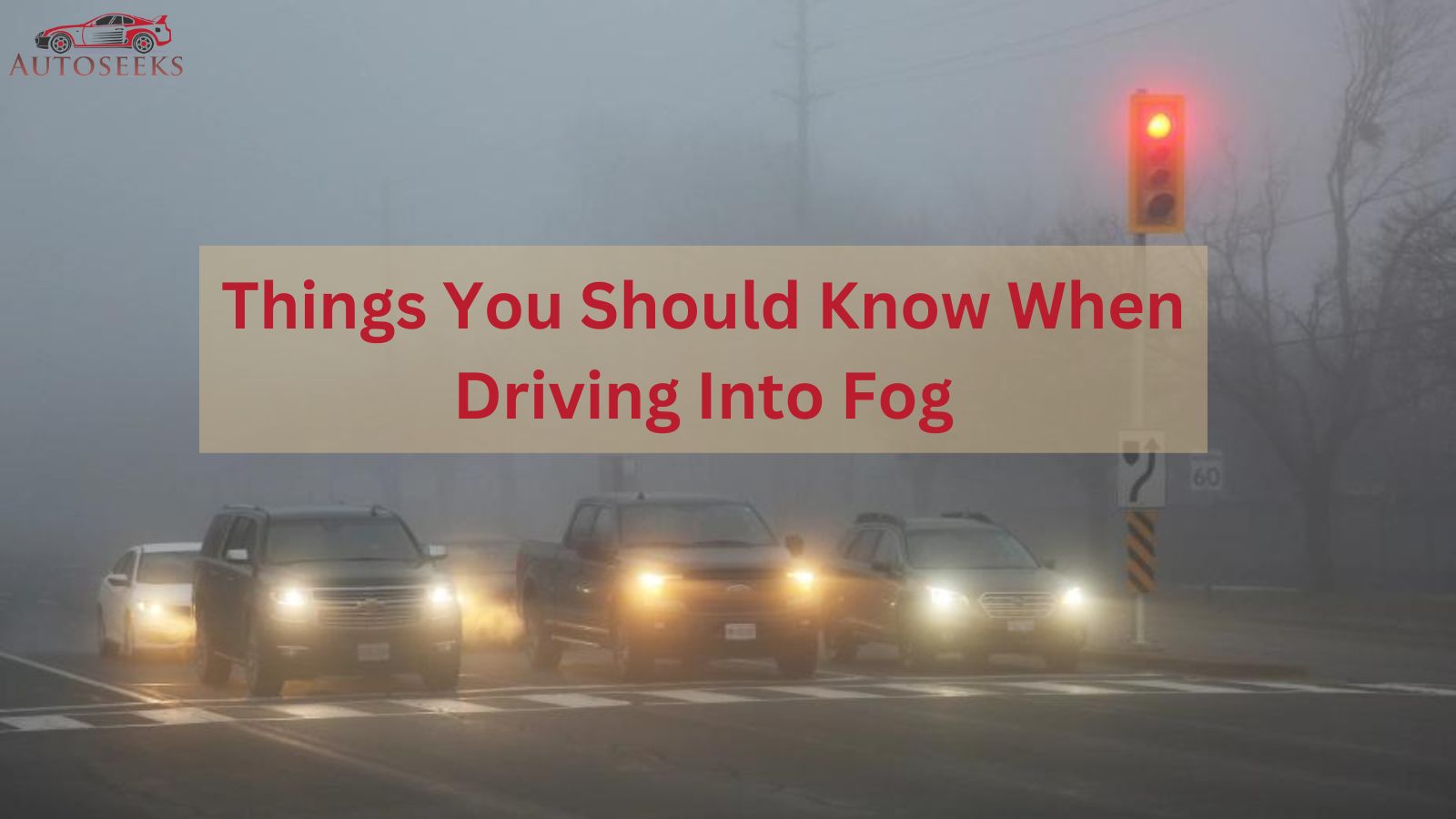Driving in the fog is a tedious task for all of us as we drift into a dreamy white patch. Fog is one of the most dangerous weather conditions motorists face. When driving into fog you should, do some basic things to drive safely.
Dense fog can reduce a driver’s visibility to almost nothing. Fog causes large accumulations and numerous accidents each year when motorists cannot see the road ahead. If you find yourself in this scary situation, consider these tips for a safer trip.
Fog is generated due to cloud formation on the upper surface of the earth. It is common in the morning or afternoon near lakes and the coast. It can form at other times and in other places. You should check the local weather before going. If possible, avoid driving in fog.
Dense or light fog is one of the main causes of accidents, including chain accidents. If you can’t avoid driving in fog, here are some tips when driving into fog you should know.
Table of Contents
7 Things You Should Know When Driving Into Fog
Driving in the fog can be dangerous and even deadly. Because poor visibility in fog makes it tough for anyone to spot upcoming hazards and avoid disasters. It is as tough as driving in snow. However, the best sedans for snow driving make your task easy.
That doesn’t mean, however, that you can’t drive in fog and still reach your destination safely. Below are the top things when driving into fog you should follow to make your drive safer and easier.
1. Keep Low Speed
Fog severely reduces forward visibility and makes it difficult to see potential hazards on the road. When driving in fog, you should drive slowly to give yourself a significantly longer reaction time to initiate emergency maneuvers if necessary.
You also have the opportunity to see upcoming road signs as you approach them. However, if you drive too slowly, you become a danger to other drivers.

2. Use Headlights and Fog Lights
Visibility is one of the important factors while driving into the fog. Therefore, when driving into fog you should always keep your headlights or fog lights on, no matter what time of day you are driving. Headlights assist drivers to see better and ensure a safe drive. However, you should avoid high beams.
While more light might seem like the perfect solution for visibility, in heavy fog high beams can increase glare and make it harder for you to see what’s ahead.
3. Use Low Beam Lights
Using your car’s high beams can significantly affect your vision. While high beam headlights improve your vision in most situations, the stronger beams reflect off water particles in the fog, making it appear denser.
Many vehicles are equipped with special fog lights or fog lamps. These may or may not increase your visibility.
4. Follow Road Lines
In fog, it is important to follow the course of the road with your eyes. Drivers are naturally attracted to light and may only drive based on it.
While other vehicle lights can sometimes be used as reference points, correctly positioning your vehicle within the lines is a great way to ensure your safety.
5. Keep Your Distance
Keep a much greater distance between your car and the car in front of you. Although you may not feel comfortable losing sight of one of the only objects you see at the time, make sure there is a significant distance between your car and the vehicle in front of you.

6. Use Windshield Wipers
Fog is a thick accumulation of water molecules suspended in the atmosphere. Driving through them will collect moisture on your windows, further reducing your visibility. You can usually keep moisture off your windshield by turning on your vehicle’s defroster.
7. Consider Pulling Over
Under most weather conditions, fog is temporary. It can only appear in a specific region or just wander around its area. You may want to pull over to avoid the discomfort associated with driving in the fog.
If you want to stop, stay as far to the side of the road as possible so as not to confuse other drivers.
FAQ Regarding When Driving Into Fog You Should Know
Q. 1) What do you do when you are driving in fog?
Ans. 1) In heavy fog, you should use your fog lights in addition to the low beams if you have them. Never drive with only your parking lights or fog lights on. It’s illegal and unsafe. You should use your rear fog lights if you have them when visibility is less than about 300 feet.
Q. 2) Should you turn your headlights on in fog?
Ans. 2) Instead of high beams, you should use a low beam or normal headlights in foggy conditions. Also, you must use your fog lights. Fog lights should not be used in place of your regular headlights. They are intended to be used with these beams to improve visibility.
Q. 3) Should you use high-beam or low-beam when driving in fog or smoke?
Ans. 3) Do not use high beams. They don’t shine through fog, instead, they reflect the light into your eyes, making things worse for you and other drivers. In thick fog, use your fog lights in addition to your low beams, if you have them.
Q. 4) Why red light is not used in foggy weather?
Ans. 4) The bright red light is even doubled by the reflection of the wet road and raindrops on the windshield. This can significantly reduce the driver’s visibility of the road. Also, don’t use your high beams in fog.
Conclusion
If foggy conditions become overwhelming or you’re feeling disoriented, pull to the side of the road and turn on your hazard lights. Fog is common in the early hours of the morning and will dissipate after the sun has risen.
If you drive in extremely thick fog at night, you should take regular breaks to rest your eyes.
- Keeping Your Gear Organized and Mobile - May 6, 2024
- Understanding Strut Tower Braces for Your Car - May 3, 2024
- Unlocking The Secrets of Your Car’s Identity with a VIN Decoder - April 25, 2024

